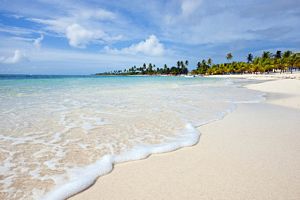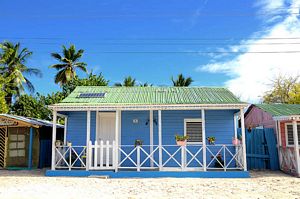
- Get to Know
- About Dominican Republic
- What to see
- What to do
- Hotels
- Santo Domingo
- Boca Chica
- South coast
- Bani
- Azua de Compostela
- Barahona
- Pedernales
- Inland Region
- Santiago de los caballeros
- Jarabacoa
- Concepción de la Vega
- Constanza
- San Francisco de Macorís
- North Coast
- MonteCristi
- Puerto Plata
- S. F. de Puerto Plata
- Sosúa
- Cabarete
- Nagua
More Offers on:Touristic Information:- Dominican Republic
- Santo Domingo
- San Pedro de Macorís
- Juan Dolio
- La Romana
- Higüey
- Punta Cana
- Playa Bávaro
- Samaná
- Hato Mayor
- Bani
- Azua
- San Cristóbal
- Barahona
- Pedernales
- Bahoruco
- San Juan de la Maguana
- Independencia
- Montecristi
- Puerto Plata
- Sosúa
- Cabarete
- Río San Juan
- Nagua
- Santiago
- Jarabacoa
- La Vega
- Constanza
- Cotuí
- Bonao
Basic Information:- Prepare your travel
- How to get
- Means of Transport
- Gastronomy
- What to See
- Beaches
- Museums
- Natural Parks
- Zoos & Aquariums
- What to do
Others:Saona Island, Dominican Republic
Visit Saona Island, one of the most attractive idyllic virgin beaches in the southeast of Dominican Republic.
Saona Island is surrounded by nice beaches and history and is one of the most demanded spots in the southeast of the country. Located to the south of the East National Park, it is inhabited by numerous birds, turtles, dolphins, whales, and manatees, and it is visited each day by tourists who arrive to its coasts to discover the mysteries it hide.
It is inhabited by only 1200 persons that live in huts made of palms and herbs, as it is prohibited to built there, and whose main occupations are tourism and fishing. Agriculture is not a way of living for them, as the ground is quite rocky, making the task harder.
Saona Island is rocky and has quite many grottoes and caverns on its northeast, it is a very interesting area due to the great amount of indigenous relics found in there. The coast has low rocky edges with sandy coves, and is the only place in the island with a slight elevation above the sea level, known as Punta Roca.
Find this part of the island where sheltered the indigenous that in times of Cotubamaná had to ran away from the troops of Juan de Esquivel under the command of Nicolás de Ovando. The well protected and difficult to access caves where their shelters, saving their belongings until 1912, when the North American archaeologist Theodore de Booy found them.
In the rest of the country a string of endless white sanded and crystalline waters beaches show their several blue colors, being mixed with the sun. Coconut tree, Mahogany, Logwood, Cape gooseberry, Palos de yayas, Yayas bobas, Guarana and Guarea guidonia accompany visitors on their trips in Saona Island.
Numerous kind of birds can be seen in the island. Parrots, Ravens, Seagulls, Gallaretas, gallitos, Dendrocygninaes and wild doves (also known as “cachito blanco”). Doves were an important problem some time ago due to their large amount, so local farmers used them to feed their pigs. que los agricultores locales llegaron a utilizar los polluelos como alimento para sus cerdos. Nevertheless, this habit was eradicated during the regime of Trujillo.
The island is rich in fishes, being possible to find large shoals of lobsters and mollusks like the Queen conch.
In a thatched hut working as a restaurant tourists have a lunch made of fish plates and rice cooked with coconut.
In the evening, visitors go back to their hotels, but if you still prefer to spend the night in the island, the organization offers tents.
It is part of the East National Park and is officially protected, so no buildings are allowed in its littoral. Boats leave from Playa Bayahibe Beach, but all the resorts in Punta Cana or Playa Bávaro Beach offer this tour. It can also be directly organized in Santo Domingo. the trip takes approximately 3 hours from La Romana.
More information:
Ticket Price:
1.300 RD$ per person (you can negotiate it with the agency or boatmen in Playa de Bayahibe Beach)
Opening hours:
Boats leave early in the morning and go back at 4:00pm.
Services and facilities:
Bath, showers and picnic tables.
Recommended Excursions:
Carte Interactive:
La Romana
What to see:
- Iglesia Santa Rosa de Lima Church
- Central Park
- Altos de Chavón
- Casa de Campo Marina
- Padre Nuestro Ecological and Archeological Trail
- Dominicus Casino
- Puente Cave
- Tabacalera La Matilde Tour
- Parque Nacional del Este
Beaches:
- Saona Island
- Playa Minitas Beach
- Playa Bayahibe Beach
- Dominicus Beach
- Palmilla Beach
- Catalina Island
- Catalinita Island
What to do:
Hotels
Book now your Hotel or Apartment:
Flight Offers:
Compare flight offers and book in advance to save some money.
Car Rental
Find the largest offer in car rental for your holidays:
Copyright www.VisitDominicanRepublic.org © - All rights reserved.





